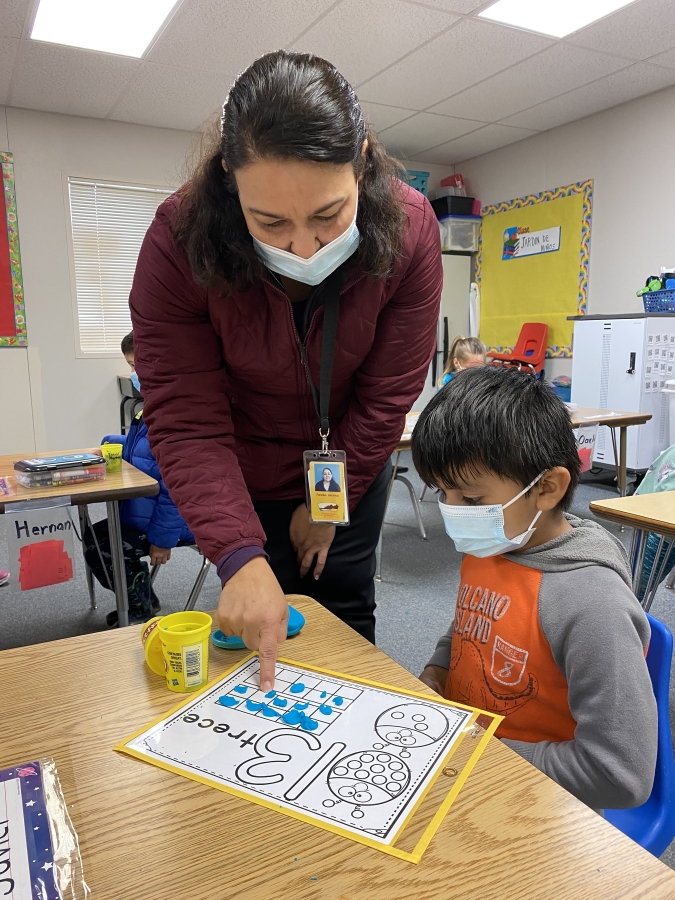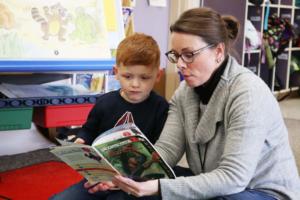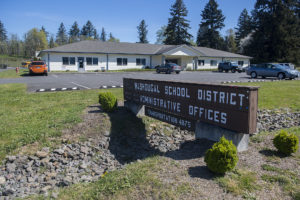As Washougal School District leaders prepared to launch a dual-language program for the 2021-22 school year, they thought they’d start out with one class of 20 or so kindergarten students, with an even mix of native English speakers and native Spanish speakers.
Things didn’t exactly turn out that way. As a result, the district was forced to deal with a problem of the best possible kind.
“The interest, especially from students coming from native English-speaking families, was much higher, so we ended up doing two classrooms, one that is pretty close to 50-50 split and one with (students) from English speaking backgrounds,” said Washougal Learning Academy principal Jason Foster, the district’s dual language program coordinator. “It’s not exactly the model that we thought we’d be supporting, but we wanted to make sure that as many kids as possible had the opportunity.”
The program is succeeding in its mission to help students embrace multilingualism and multiculturalism, and is poised to become one of the district’s signature offerings, according to Foster, who added that district leaders “want this to be something that Washougal is, not something that Washougal does.”
“Developing a dual language program takes time, patience and dedication,” dual-language teachers Veronica Paredes and Kelly Borquist said in a joint statement. “It has been amazing to see how the staff, district and community of Washougal have worked together to create a successful program.”



